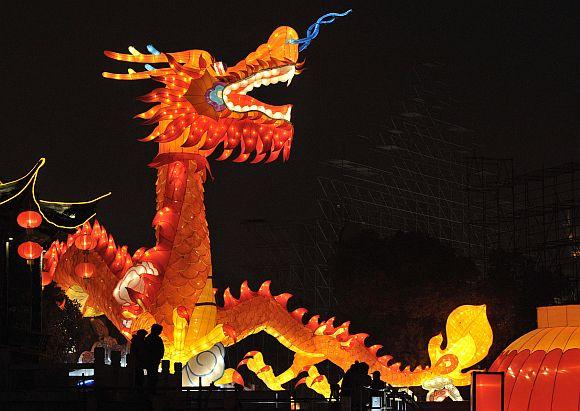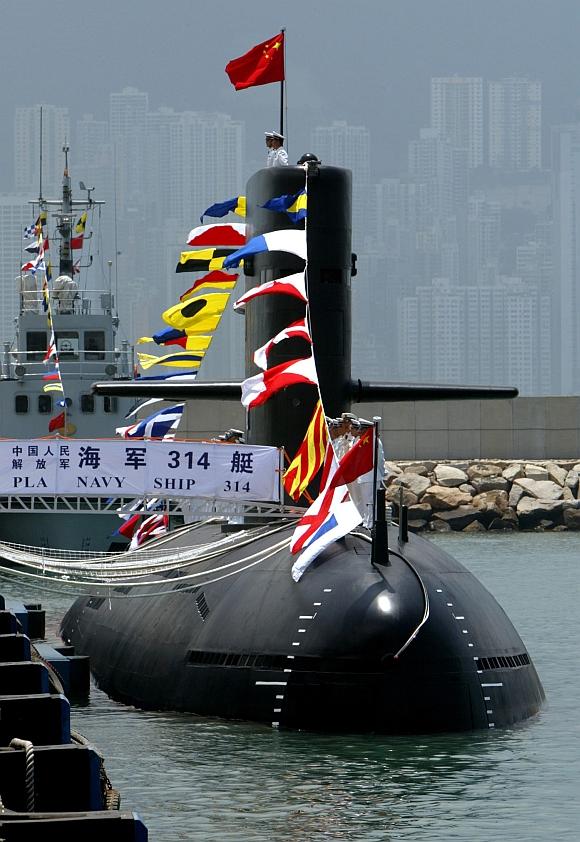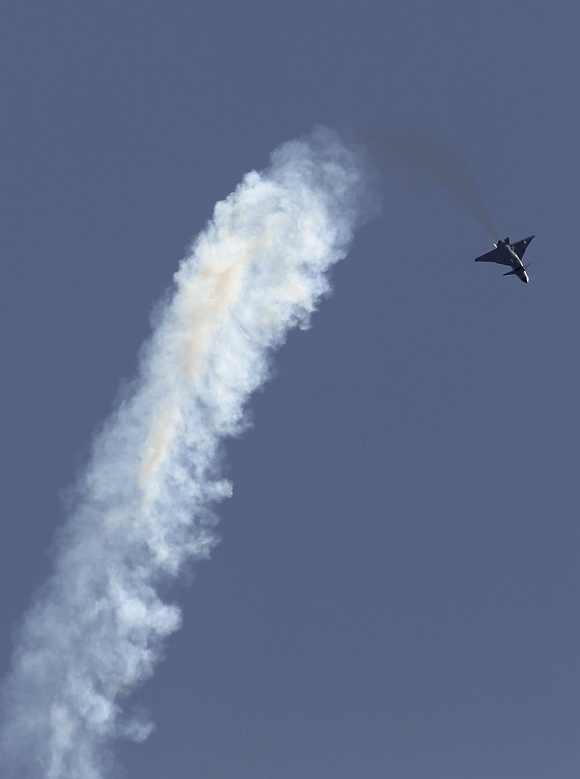Photographs: Sean Yong/Reuters Harsh V Pant
India's ties with China are gradually becoming competitive, with a sentiment gaining ground among Indian policy elites that China is not sensitive to India's core security interests and does not acknowledge its status as a global player, says Harsh V Pant.
Calling on the party workers to fight corruption and promising to continue China's 'rejuvenation', Xi Jinping, China's new leader took over the mantle of the general secretary of the Communist Party from Hu Jintao last week.
He will be effectively running the country from now with his No 2 Li Keqiang and five other members of the party's politburo standing committee. This is China's 'fifth generation' of political leadership and there are a number of challenges from economic stagnation to political turmoil and environmental degradation that confront the new leadership.
But the world will be particularly interested in how this new set of Chinese leaders deals with thorny foreign policy challenges. While a lot of attention has been paid in recent times to China's growing aggressiveness in South China Sea, the trajectory of Sino-Indian relations too has been downhill for quite some time now.
There are multiple levels -- diplomatic, economic, cultural -- at which China and India are engaging each other. Sino-Indian economic ties are at an all-time high with annual bilateral trade expected to reach around $100 billion over the next three years.
...
'Popular opinion in India, China rapidly turning against each other'
Photographs: Reuters
Yet despite that pretence of a sustained engagement, suspicions of each other are at an all-time high with the two states sharing one of the world's most heavily militarised border areas. Alarmed by China's reiteration of its claims over the whole of Arunachal Pradesh, India is expanding its military deployments in its north-eastern region.
If China has deployed around 3,00,000 troops across the Tibetan plateau, India is responding by raising its military deployment from 1,20,000 to 1,80,000 along with two Sukhoi 30 fighter squadrons in the region. And the issue is not merely about the border and Tibet anymore. Today, New Delhi and Beijing both view themselves are rising powers and as a consequence, their interests and capabilities are rubbing off against each other not merely in Asia but in other parts of the world as well.
The two states do not fully comprehend the complexities of each other's domestic politics either. China's opaque political system festers a lack of transparency that can only be dangerous over the long term. India's, often cacophonous, domestic political system seems perpetually unable to attain a seriousness of purpose vis-a-vis China. As if this were not enough, popular opinion in both countries is rapidly turning against each other.
A recent Pew Research Centre poll found that two-thirds of Chinese respondents viewed India unfavourably. The feeling is mutual with only 23 percent of Indians describing their relationship with China as one of cooperation and only 24 percent viewing China's growing economy as a good thing. So much for the trade leads to greater understanding thesis!
...
'Distrust between India, China growing at an alarming rate'
Image: A Chinese naval submarine docks at the Ngong Shuen Chau naval base in Hong KongPhotographs: Reuters
Alarm bells are ringing all around India's periphery as China's growing military might is allowing it to dictate the terms of engagement to its neighbours. A comprehensive programme of naval development is underway with some warning of a Chinese Monroe Doctrine taking on a new degree of salience. Last month, China unveiled its first aircraft carrier -- the Liaoning -- with five more reportedly under development. China is busy developing an extensive near-seas capability allowing it to pursue its ambitions unhindered even from the influence of the world's reigning heavyweight, the US.
Yet India has found it difficult to articulate a China policy that can go beyond cliches. It's not about matching China weapon for weapon. It is about managing China's rise in a manner that does not lead to India giving up its vital interests. There is no likelihood of border settlement anytime soon but the infrastructure upgradation on Indian side of the border has only just begun.
Despite 15 odd rounds, the border talks between China and India have not led to anything substantive. Rising nationalism and the increasing sway of the PLA in policymaking in China will make it even more difficult for the two sides to reach a diplomatic solution.
As China and India have risen in the global hierarchy, their bilateral relationship has become uneasy as they attempt to come to terms with each other's rise. The distrust between the two is actually growing at an alarming rate, notwithstanding the rhetoric of official pronouncements.
Growing economic cooperation as well as bilateral political and socio-cultural exchanges have done little to assuage each country's concerns about the other's intentions. Indian policy trajectory toward China is evolving as India starts to pursue a policy of internal and external balancing more forcefully in an attempt to protect its core interests.
...
'India's ties with China gradually becoming competitive'
Image: A J-10 fighter jet of China Air ForcePhotographs: Reuters
The government is trying to fashion an effective response to the rise of China at a time of great regional and global turbulence. Though it is not entirely clear if there is a larger strategic framework shaping India's China policy, India's approach toward China is indeed undergoing a transformation, the full consequences of which will only be visible a few years down the line.
With Sino-Indian friction growing and the potential for conflict remaining high, the challenge to India is formidable. India is increasingly bracketed with China as a rising or emerging power -- or even a global superpower -- though it has yet to achieve the economic and political profile that China enjoys regionally and globally.
India's main security concern today is not the increasingly decrepit state of Pakistan but rather an ever more assertive China, whose ambitions are likely to reshape the contours of the regional and global balances of power with deleterious consequences for Indian interests.
India's ties with China are thus gradually becoming competitive, with a sentiment gaining ground among Indian policy elites that China is not sensitive to India's core security interests and does not acknowledge its status as a global player. As a consequence, India is belatedly gearing up to respond to China's rise with a mix of internal consolidation and external partnerships.
High level political contacts are set to resume between Delhi and Beijing with the visit of the deputy chairman of the Planning Commission to Beijing later this month followed by a visit of the Indian National Security Advisor. It remains to be seen if these initiatives can restore some semblance of stability to the Sino-Indian relationship. If the past is any guide, there is little reason to be optimistic.




article